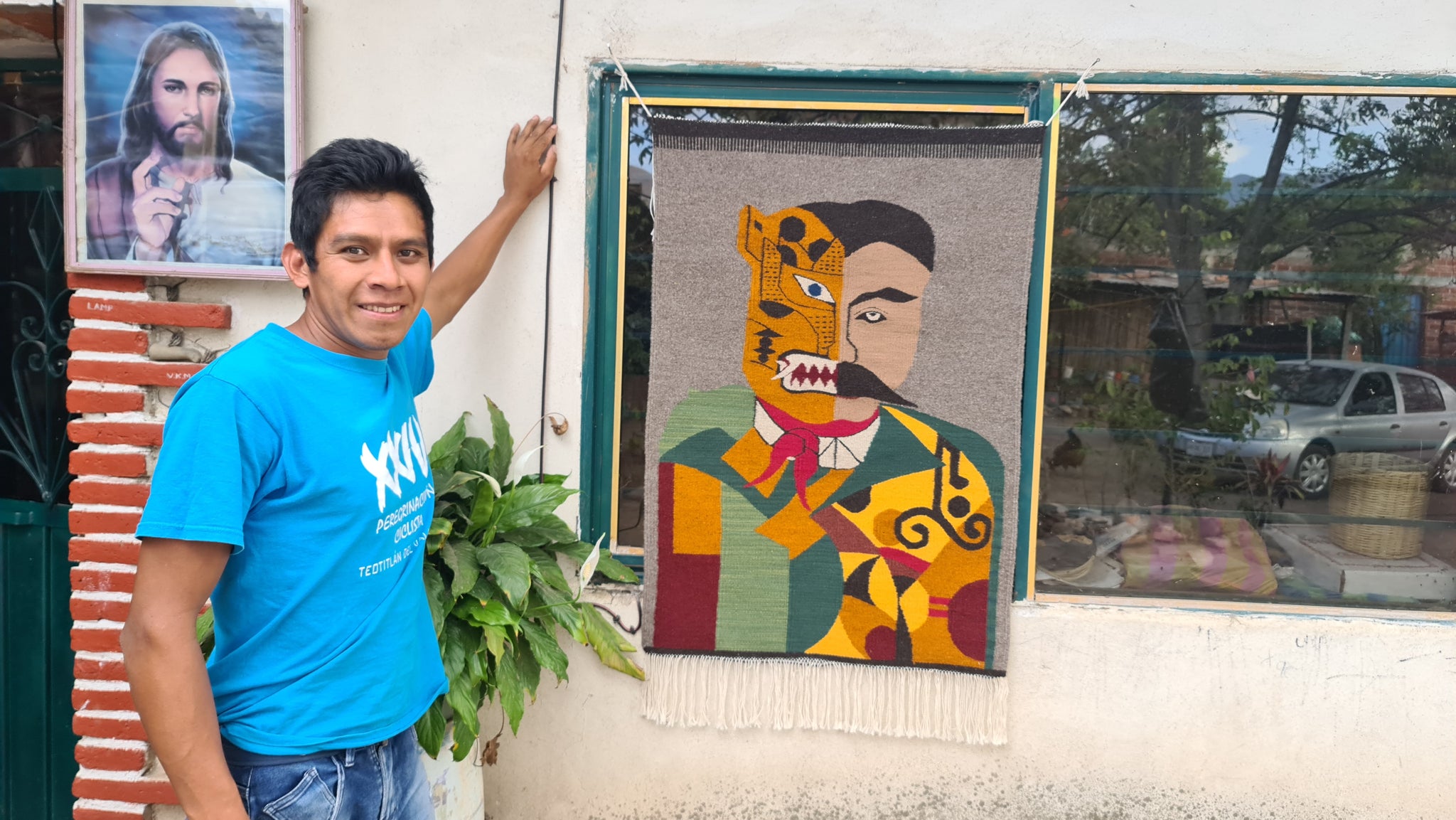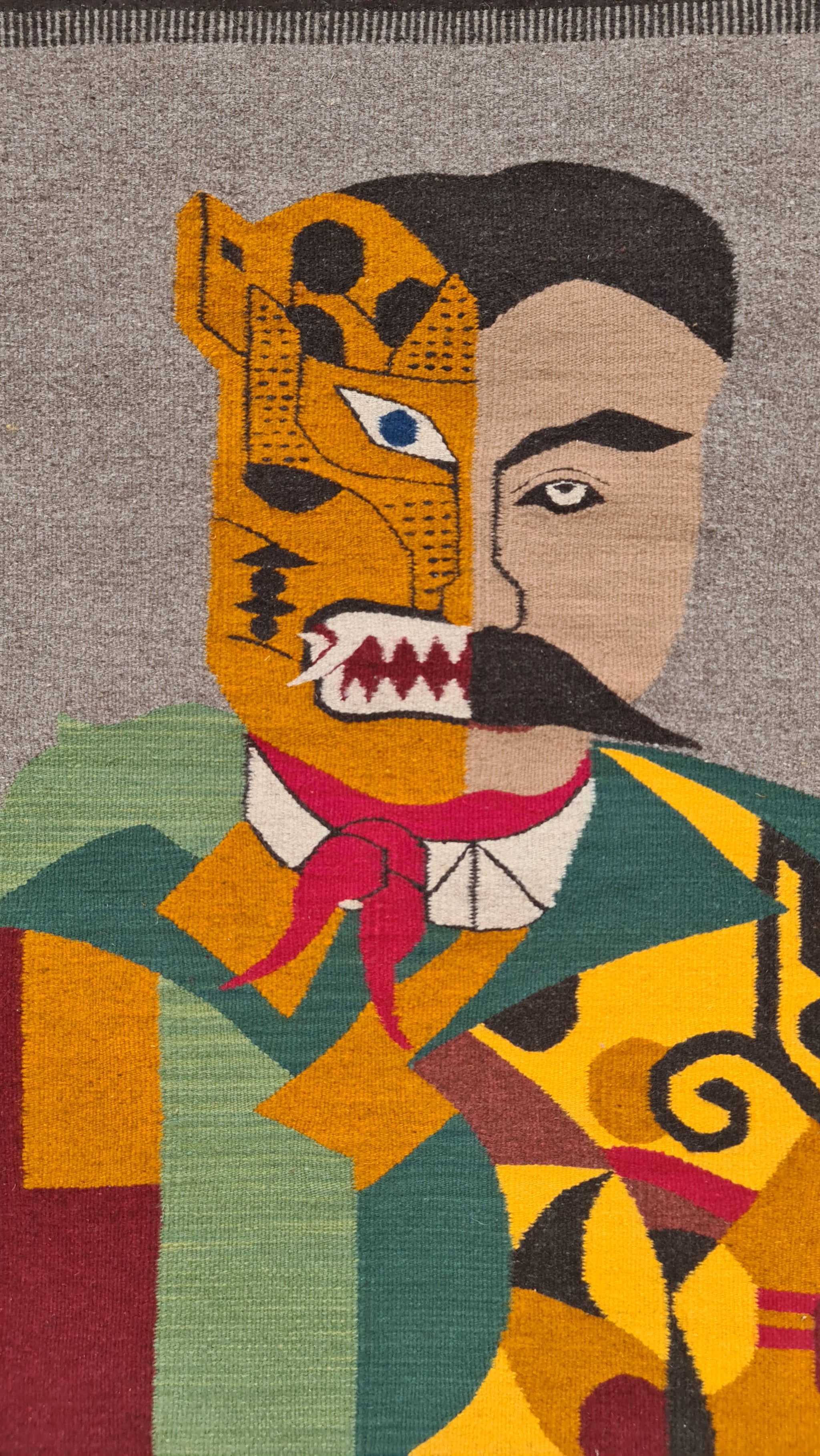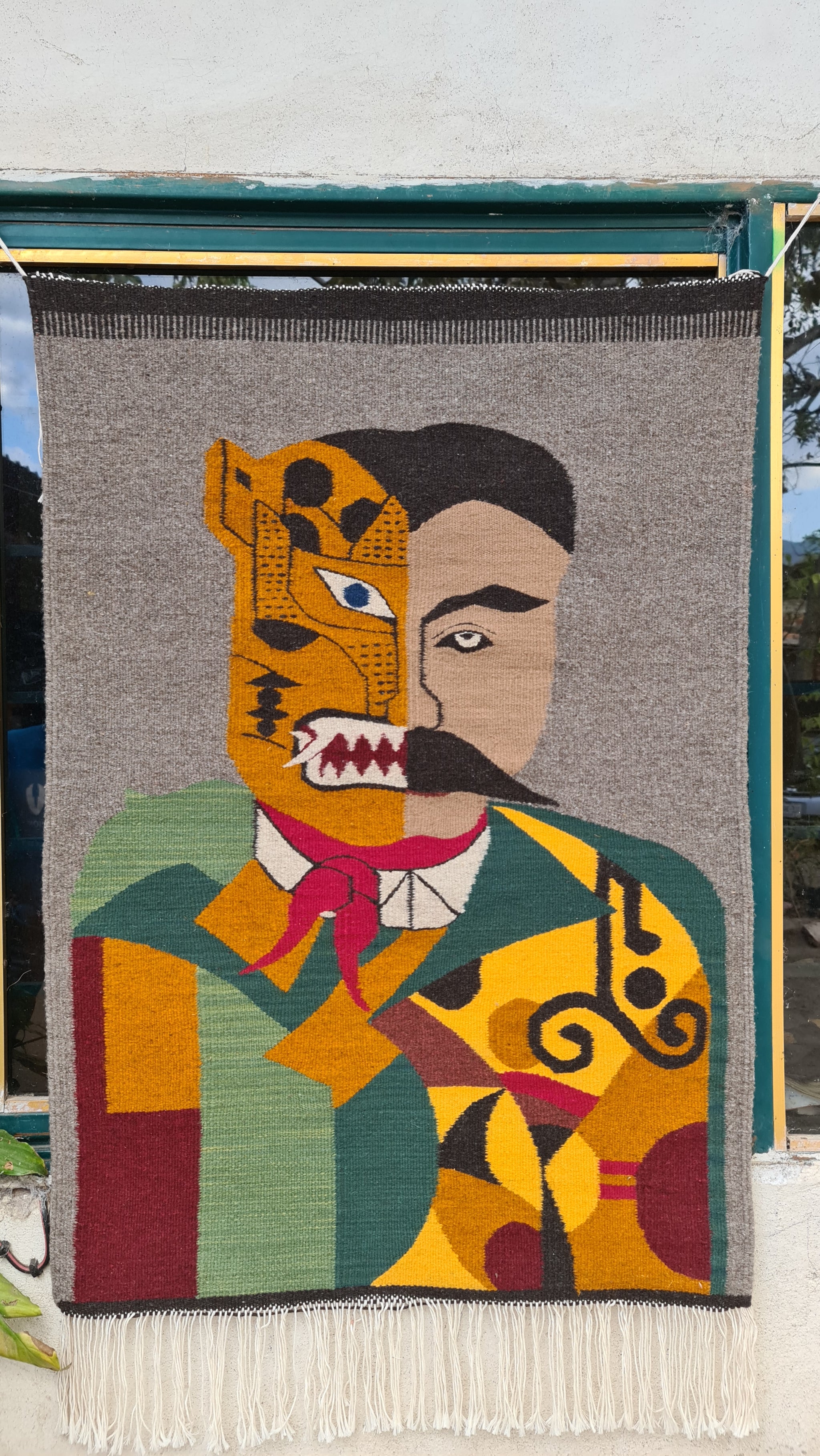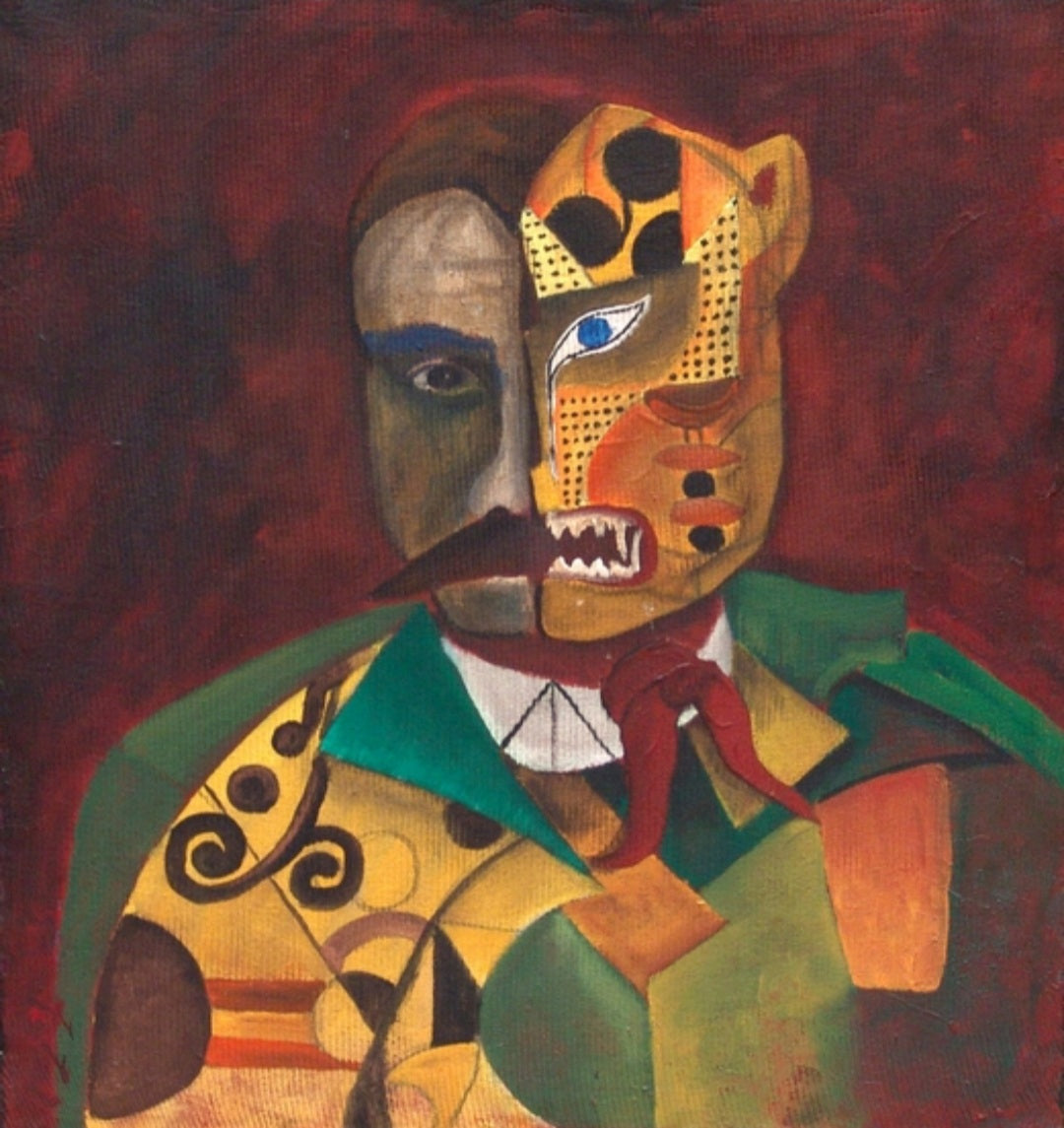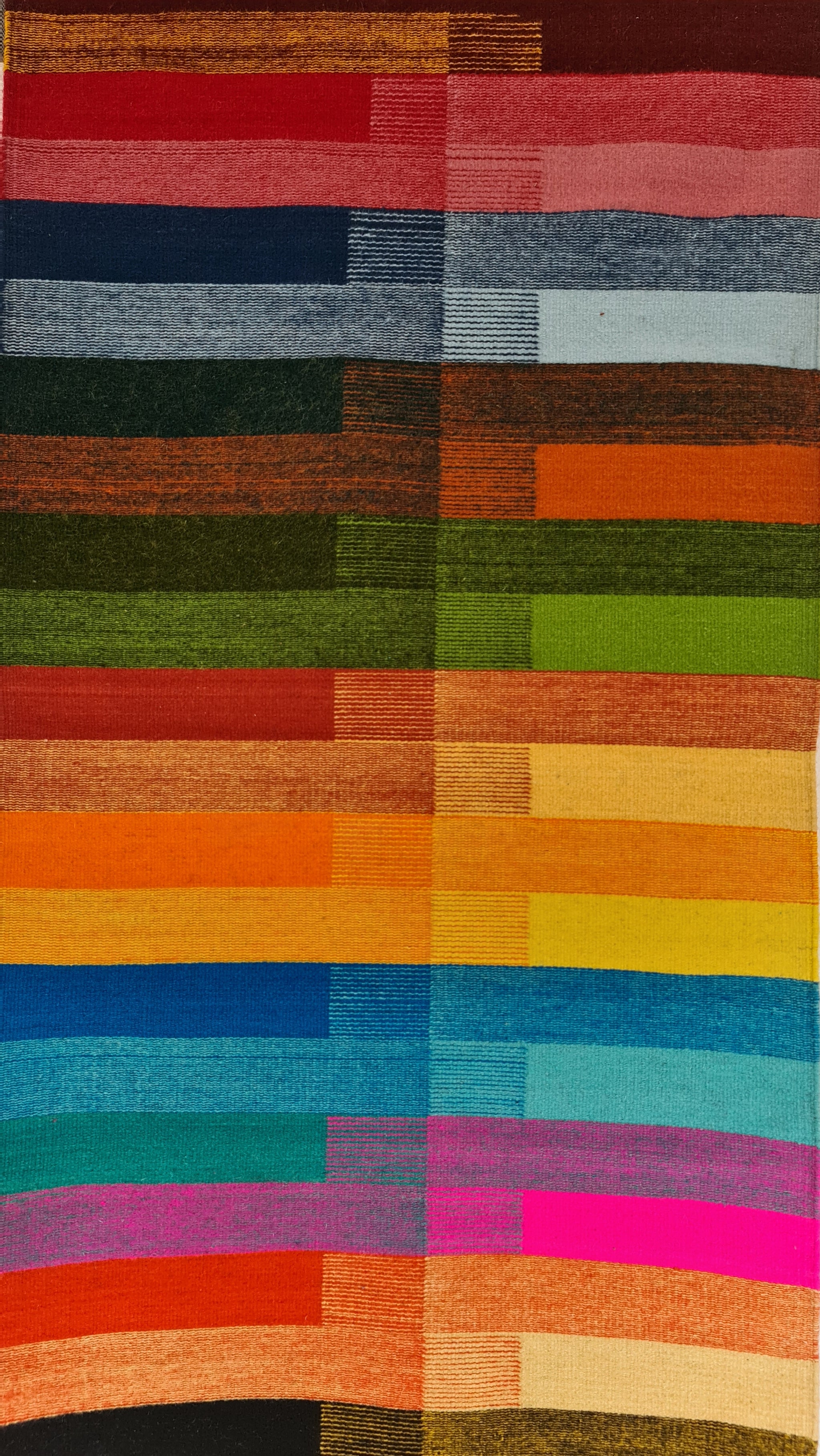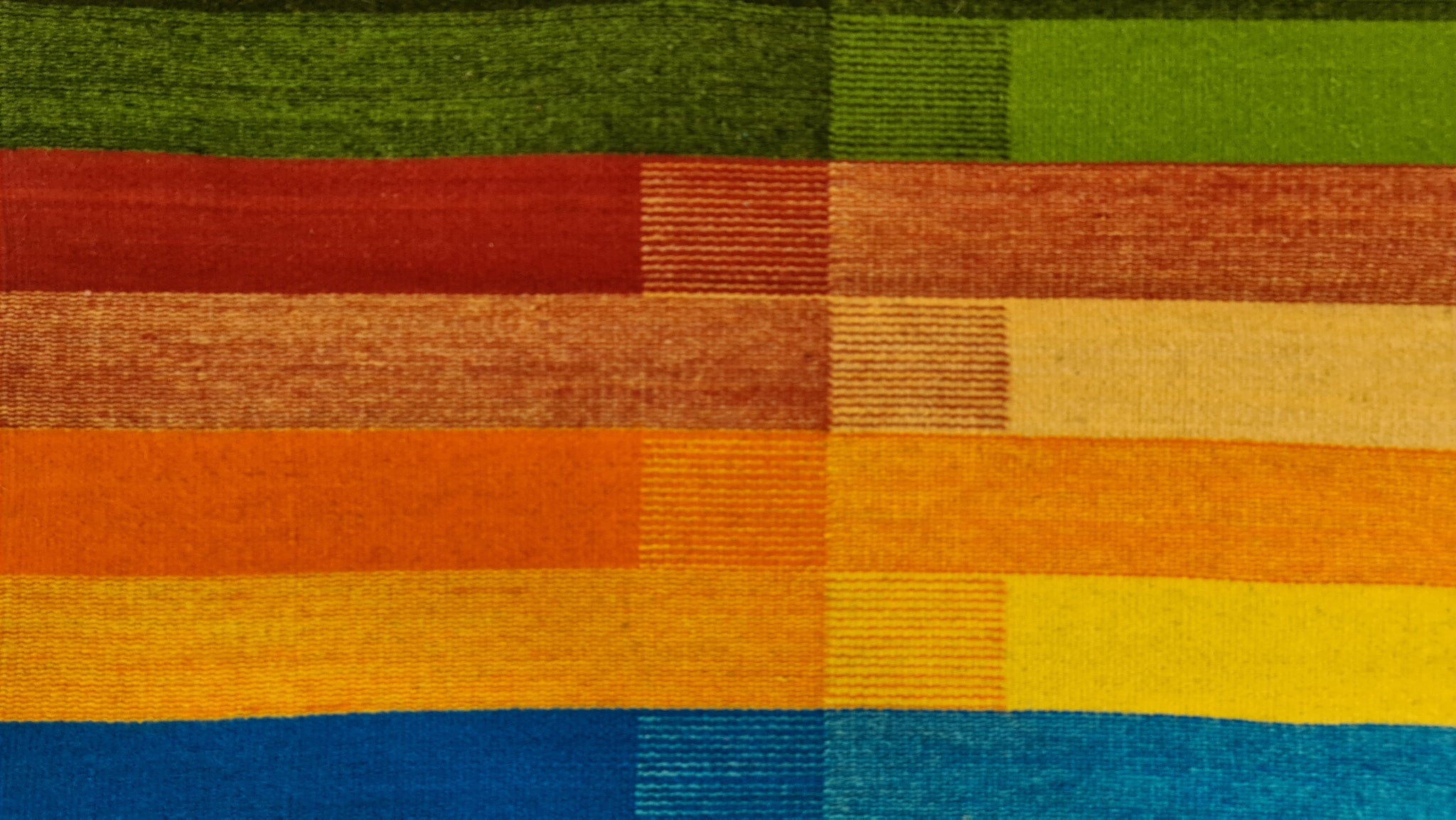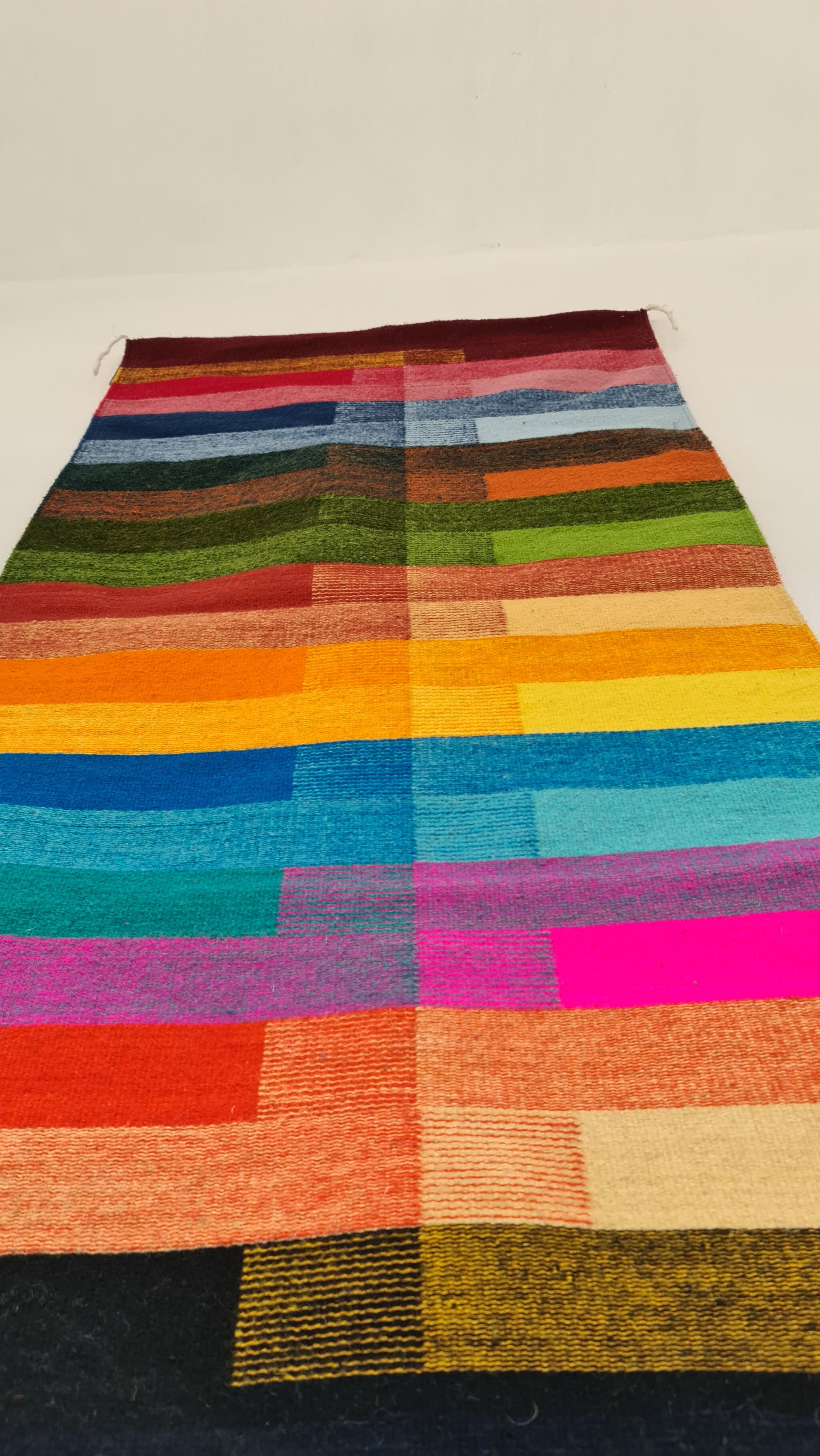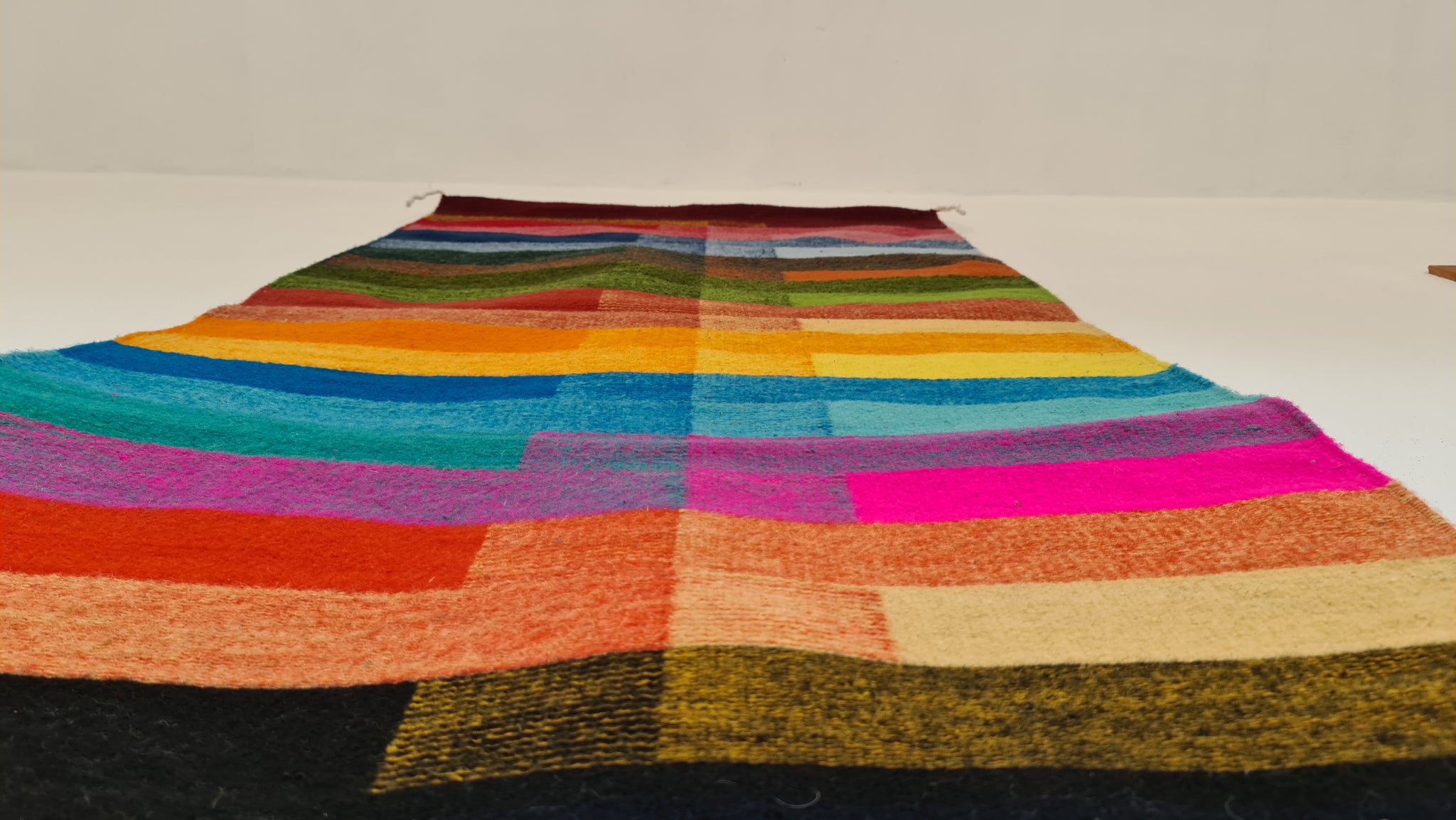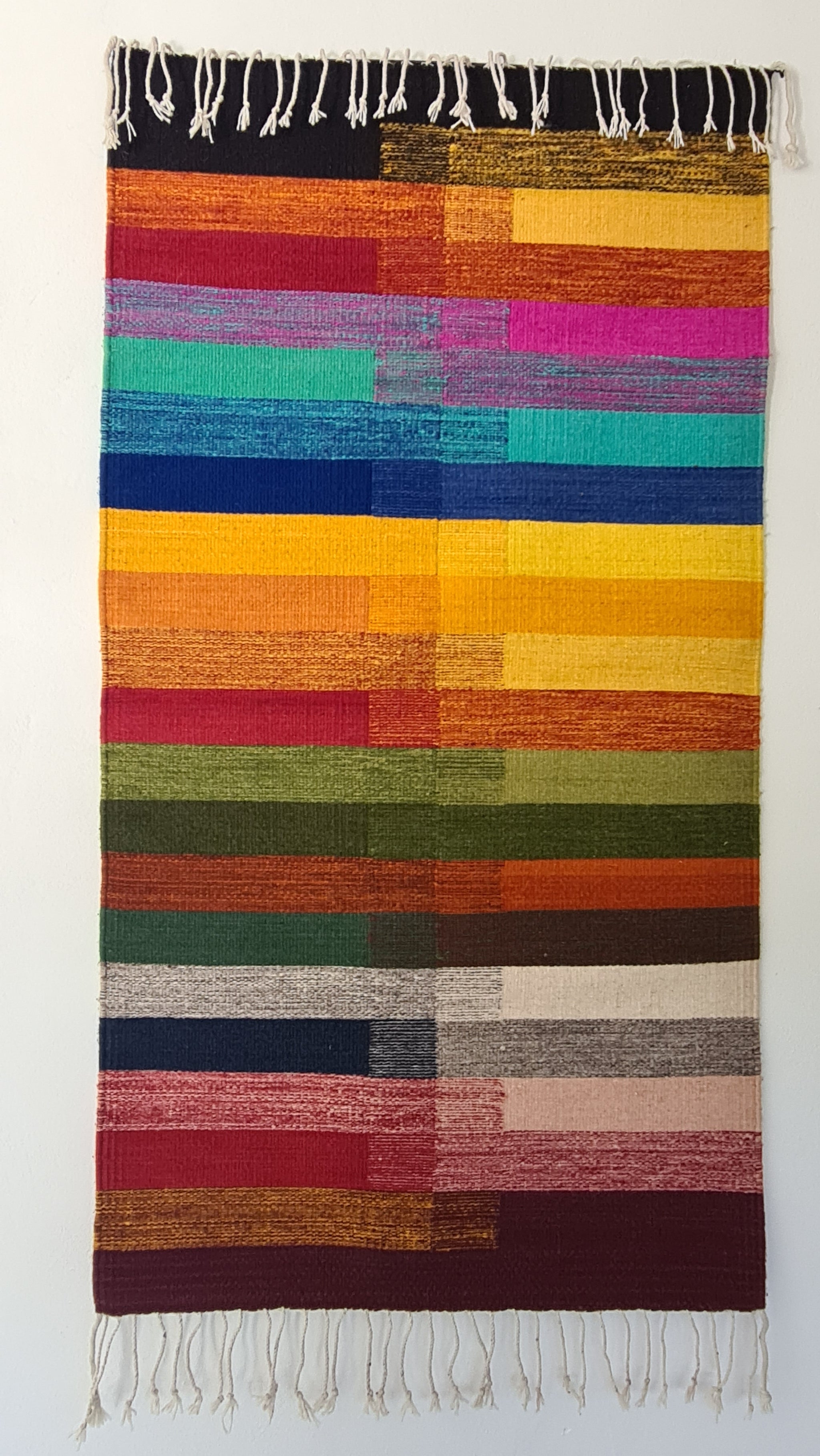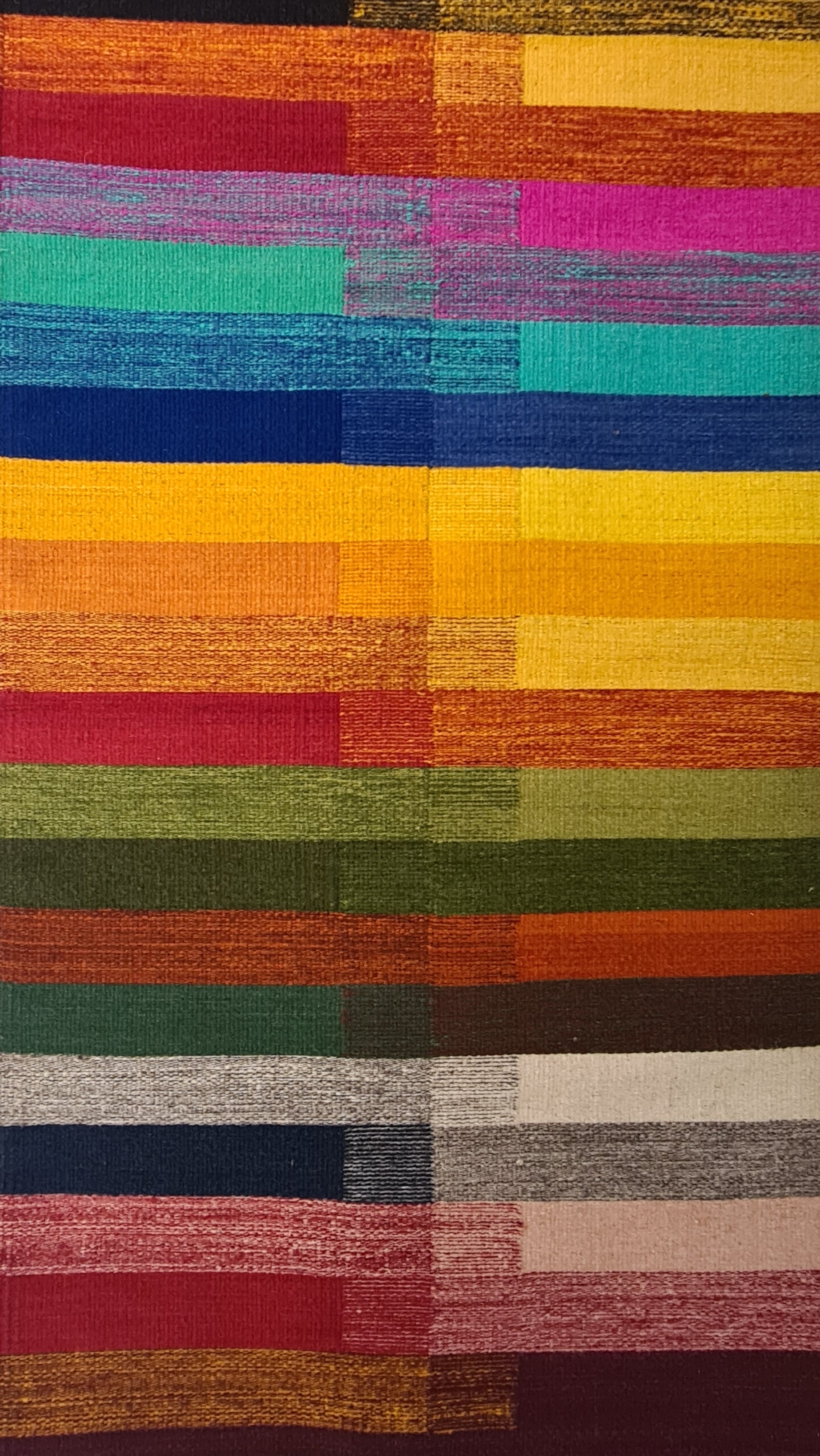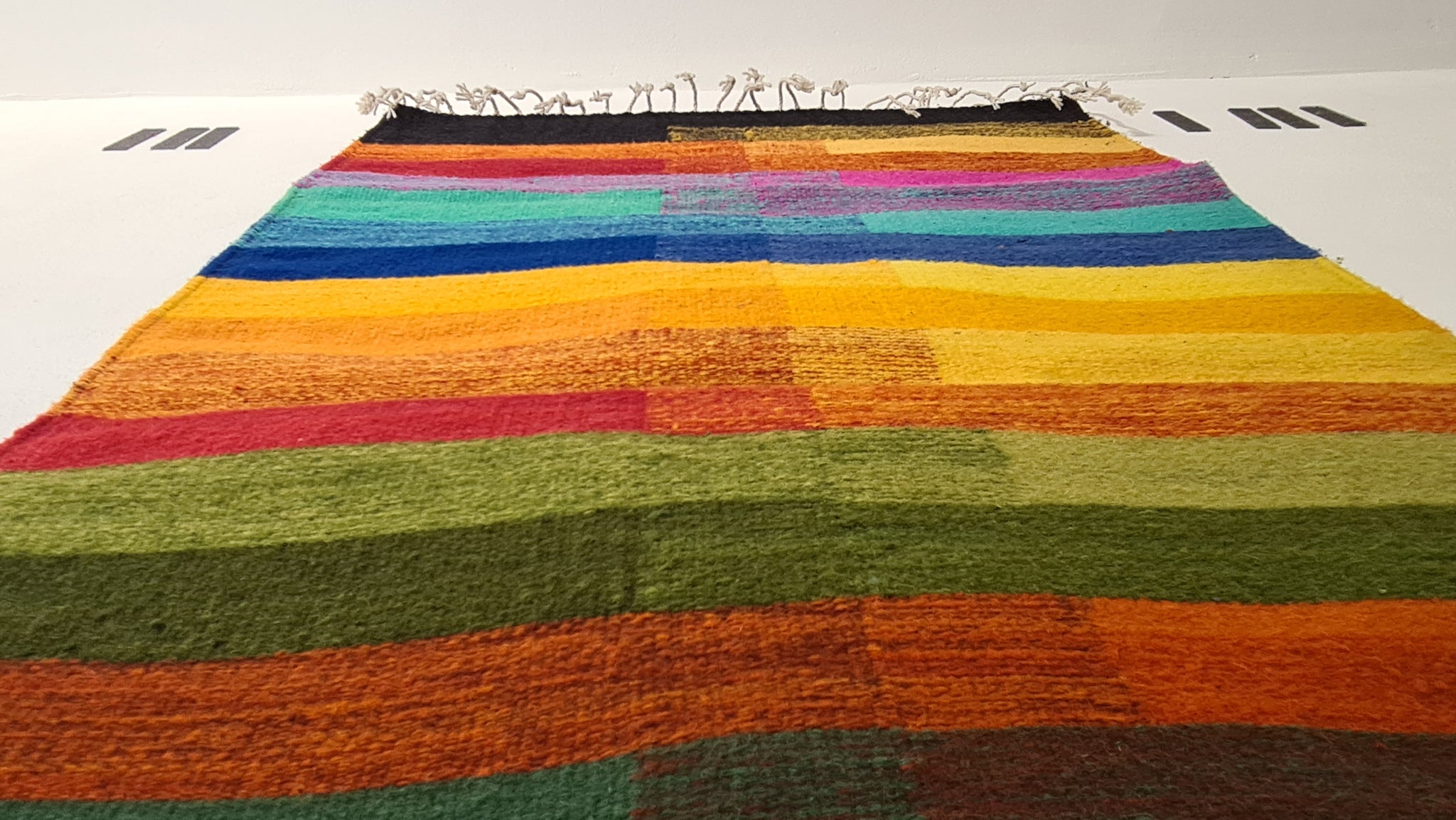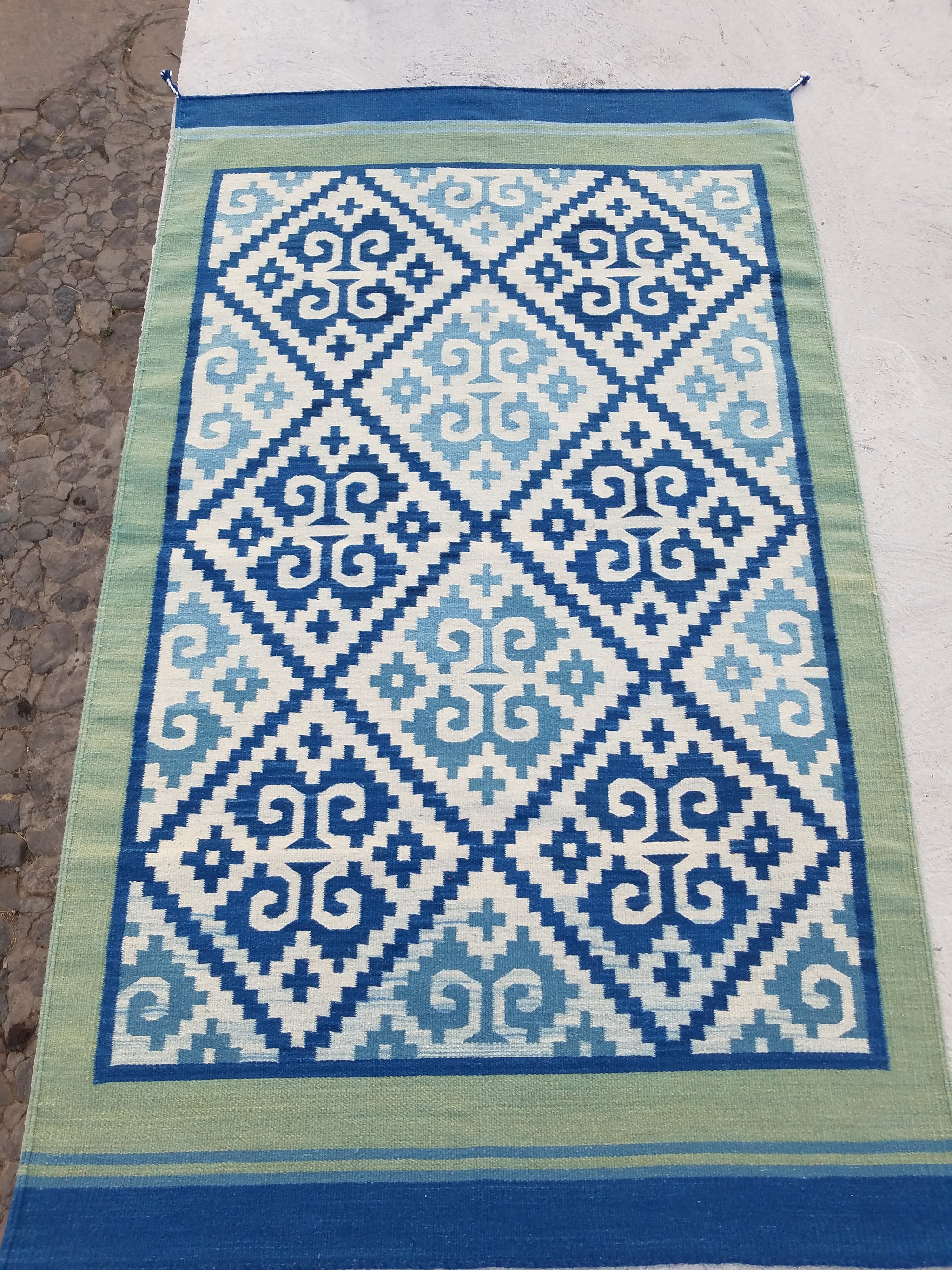Kayu'ú gubiish: sunset
$ 7,000.00
Size: 80x150cm; 2.6x5ft
Weaver: Jacinto Gutierrez García (grandson)
Materials and methods: criollo sheep wool hand dyed with colorfast aniline dyes using an exhaustive method. Handwoven on a Zapotec style loom of the 16th century adapted from European styles. Woven using a 7 threads per inch reed.
Design, patterns and symbols: this red color gradiation represents the cleansing property of fire. In Dixzaa language, red (shniiá) and the word clean are the same (niiā) which also relate to the word hand (niîá). Let's remember to cleanse our live and surrounding environment with the healing powers of fire.
Guií is our word for fire, a sound that is the building block for many other words such as Guieæ (rock), Guie'æ (flower), Guiíb (metal), Guiīsh (weed), Gui'ín (chilli)... etc. The idea is that this root word communicates fire and its power of transformation or creation. For instance, you can use rocks to make fire, a flower is ancient sunlight blossoming on earth, you need fire to transform ore into metals, there are weeds thrive after a fire, chillis are hot and fiery... etc.
The Wixarika people call fire Grand father fire and have very dedicated rituals for fire. A lot of native coomunities still practice the ceremony of the new fire that renews their communities and governments.
Managing fire challenges our body and spirit, it cleases us and helps us deal with fear helping us reach a state of impecability as taught in the Teachings of Don Juan by Carlos Castaneda. Fire allows for no mistakes, when managing a controlled burn one needs to prepare the area and consider all probable courses of the fire to take measures to contain it. Fire brings us into the present and requires our full attention and focus, one needs to react quickly and fearlessly to make the best desitions.
This field wasleft to rest from agriculture for more than 10 years, to let the land recover from plowing and growing the milpa food system. Leaving land to rest is a restoration method used by our people to let the wild continue to be wild. The Mesquites and acacia trees take over with their deep roots breaking down the soil and fixin nitrogen for the soil. The thick mesquite provides habitat for rabbits, hare and many other species; during the dry season their are among the only green trees around.
Share:
Related Items
Zapata vive, la lucha sigue!
$ 12,500.00
Tamaño: 70x100cm Size: 2.2x3.2 ft Tejedor / Weaver: Luis Mendoza Materiales y métodos: lana criollo de borrego teñida a mano con tintes naturales: bèè (grana cochinilla), Yauhtli (pericón) y Jiquilite (añil). Tejido...
Yeéti: rainbow
$ 7,150.00
Size: 80x150cm Weavers: Francisca Hipólito Variant 1 Belen Bautista, Variant 2 Price: $350USD Materials and methods: criollo sheep wool hand dyed with colorfast aniline dyes using an exhaustive method. Handwoven...
Yagshíi - River Nahual
$ 30,000.00
Size: 4.2 x 6.5 ft Indigo dyes on native criollo sheep wool. Weaver: Mario Bautista Martinez This pattern is a #fractal symbol that teaches us about the perception state that...











